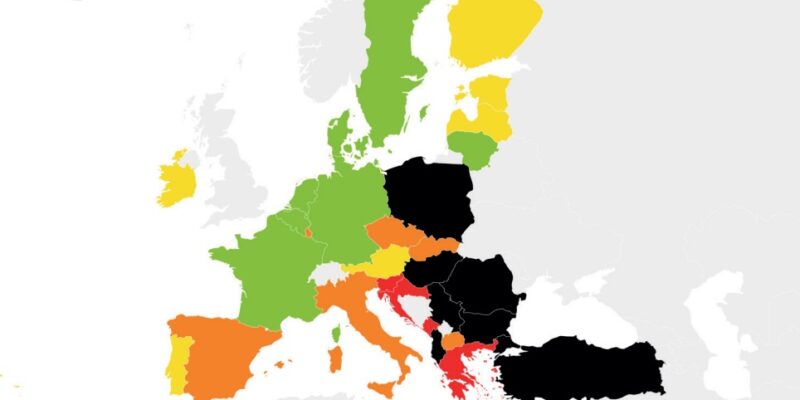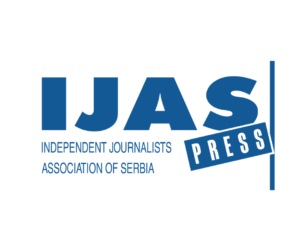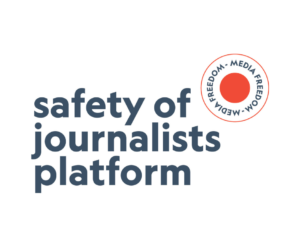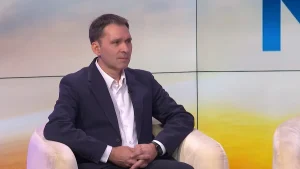The results of the 2023 Media Pluralism Monitor (MPM), which have just been published, confirm the decline in media pluralism in Europe. Of the 32 countries analysed (the 27 EU Member States and the five candidate countries), barely seven present a satisfactory situation. For the European Federation of Journalists (EFJ), this new study confirms the urgent need to considerably strengthen the provisions of the European Media Freedom Act (EMFA), which is currently being examined by the European Parliament.
“This scientific study is a real setback for European governments, who have just watered down the EMFA when the evidence shows that it should be considerably strengthened”, said Maja Sever, President of the EFJ. “Just think: governments are proposing to legalise spying on journalists at the very time when the MPM is demonstrating the extreme vulnerability of European journalists in terms of digital security. This is surreal! We strongly urge the European Parliament and the European Commission to strengthen the EMFA, not only to guarantee the protection of journalistic sources, but also to truly protect the autonomy of newsrooms, media pluralism, the independence of public media from political power and the independence of private media from interference by media owners and advertisers. It is high time for the EU to guarantee European citizens access to free, plural, reliable and independent information”.
The latest MPM report was released on 30 June by the Centre for Media Pluralism and Media Freedom (CMPF). It shows an overall deterioration in the situation of media pluralism across Europe. The study assesses the risks to media pluralism in 32 European countries; 27 EU member states and 5 candidate countries (each country’s individual report can be accessed here). The report documents the health of media ecosystems, detailing threats to media pluralism and freedom. Results show that none of the countries analysed are free from risks to media pluralism. Only seven countries are in a generally favourable situation: Germany, Sweden, The Netherlands, Denmark, Belgium, France and Lithuania.
Regarding the journalistic profession, standards and protection, the MPM report notes that while physical safety has improved overall, mostly due to the fading COVID-19 pandemic and fewer protests linked to the attacks against journalists, “online abuse has been continuously on the rise, often coming from the political elite, who should assist in creating safe and favourable conditions for independent journalism (…). Working conditions also remained problematic in several of the countries assessed, with journalists being forced to become self-employed, although the nature of their work for the media outlets demonstrates all the elements of standard employment. (…) In 2022, no country adopted a legal framework against strategic lawsuits against public participation (SLAPPs), despite an increasing number of SLAPPs being filed by the political and business elite to intimidate journalists and civic activists in many of the countries assessed, with Poland being perceived to be the worst offender”.
Here are some of the most interesting findings from the report…
Protection of the right to information. “The situation in several EU member states and candidate countries has altered. (…) Seventeen countries scored as being at medium risk: Albania, Austria, Bulgaria, Croatia, Estonia, Greece, Ireland, Italy, Luxembourg, Malta, Montenegro, Poland, Portugal, Romania, Serbia, Slovenia and The Republic of North Macedonia. In 2021, only Spain and Turkey scored as being at high risk, in 2022, these were joined by Cyprus and Hungary”.
Journalists’ working conditions. “Decent working conditions are essential, as they protect journalists from political and business influences and discourage censorship and self-censorship. Within this Indicator, only Denmark, Germany, Ireland and Sweden scored as low risk. (…) Amongst the countries that scored high risk, Croatia, Hungary, Montenegro and Romania scored 97%, the highest possible level of risk.
Journalists’ physical safety. Five countries scored as being at high risk: Albania, Greece, Sweden, The Netherlands, and Turkey.
Digital safety. “Online abuse against journalists has been on the rise in many of the countries assessed. (…) Online harassment often goes unreported and, thus, there is an underestimation of the extent of the issue.”
Transparency of media ownership. In this indicator, nine countries score as high risk: Albania, Cyprus, Finland, Hungary, Romania, Slovenia, Spain, The Czech Republic, and The Netherlands.
Plurality of media providers. “This is the highest level of risk among the 20 indicators on the MPM. Even though the concentration of the power to influence the public opinion by a narrow number of actors is acknowledged as being a potential risk in many of the EU countries, and many of them have specific regulatory frameworks to prevent or reduce it, the tendency towards high concentration in the media sector is a common trend, originating from the structural characteristics of the media markets and further increased in recent years. (…) No country is at low risk; four countries are at medium risk, whereas the remaining 28 countries are at high risk.”
Editorial independence from commercial and owners’ influence. “The worrying scores reflect the fact that advertorials are not always addressed in regulations, and many newsrooms are still financially vulnerable, while, in many countries, political and economic interests are intertwined, thereby disincentivising owners from granting sufficient freedom to editors and journalists. (…) Only four countries score as being at low risk on this indicator: Germany, Luxembourg, Portugal and The Netherlands”.
Political independence of the media. There are eleven countries in the highrisk band: seven EU member states (Croatia, Cyprus, Hungary, Malta, Poland, Romania, and Slovenia) and four candidate countries (Albania, Montenegro, Serbia and Turkey).
Editorial autonomy. 13 countries are in the high-risk zone: nine EU member states (Bulgaria, Croatia, Greece, Hungary, Lithuania, Malta, Poland, Romania, and Spain) and four candidate countries (Albania, Montenegro, Serbia and Turkey).
Independence of public service media. There are 14 countries that registered as being at high risk: Bulgaria, Cyprus, Hungary, Italy, Malta, Montenegro, Poland, Romania, Serbia, Slovakia, Slovenia, Spain, The Czech Republic and Turkey. In 11 countries there is a high risk evaluation of the legal framework for the appointment and dismissal procedures relating to the PSM management. “These 11 countries are: Bulgaria, Croatia, Cyprus, Greece, Hungary, Italy, Malta, Poland, Slovakia, Slovenia and Turkey. Further to these 11 countries, the actual practice of the appointments and dismissals of the PSM’s management, and the political independence of the process, is also at high risk in Austria, Montenegro, Romania, Serbia and Spain. Considering the social role and public interest mission of the public service media, this is a worrisome situation that has not improved over the years”.
In its conclusions, the MPM report calls on the states and public authorities:
- to improve and ensure the physical safety of journalists by strengthening and enforcing the standards that have been established by the ECtHR in order to allow journalists and media actors to freely exercise their watchdog functions;
- to condemn the political elite’s attacks on journalists;
- to improve the working conditions of journalists by the adoption of legal frameworks that allow for better labour conditions in the sector. This would include extending the public social protection schemes to all persons who practise professional journalism (whether they are regularly employed or freelancers) and incentivising collective bargaining to introduce new kinds of economic protection against market downturns;
- to monitor and discipline the media outlets’ use of practices of avoiding the provision of employment contracts and forcing journalists to become self-employed even though the nature of their collaboration mimics standard full-time employment contracts;
- to promote the implementation of an effective anti-SLAPP legal framework that is able to prevent arbitrary and unlawful attempts to silence legitimate professional journalistic and civil society activities, including allowing judges to expeditiously dismiss unfounded lawsuits that are brought
against journalists and human rights defenders.
The MPM report also calls on the European Parliament, the Council and the Commission:
- to strengthen the provision of the EMFA introducing a specific assessment of the impact of media concentrations on media pluralism, and to evaluate the impact of the merger on editorial autonomy and integrity;
- to complement the proposed regulation on media mergers with a mechanism to monitor media market concentration, on a regular basis; and to intervene in cases in which a position of market power emerges, that could have a significant impact on media pluralism;
- to establish a Fund to support media pluralism, and to finance investigative and independent journalism (“Such a Fund could be financed by part of
the revenues from the taxation of the digital companies’ profits”).
“The situation depicted by the MPM report is extremely serious”, insists Maja Sever. “It calls for strong action on the part of the Member States and the European Union, starting with a considerable strengthening of the provisions of the EMFA”.




